Food & Climate: The Impact of Food on the Environment
6 minute read
Updated on: 08 Aug 2021
What is the problem with agriculture?
Humans eat a lot of food. To grow it all, we rely on a process called agriculture, or farming. Given its scale, it’s no surprise that agriculture is a major contributor to climate change.
Of these emissions from the food supply chain, agriculture is responsible for 82% (the orange, green and yellow slices of the pie chart below).
So, where do these emissions come from?
Energy Use
Running a farm requires energy. Most of this energy comes from burning fossil fuels, which releases CO₂ into the atmosphere.
Fertilisers and Pesticides
Many of the chemicals used in agriculture also require a considerable amount of energy to produce.
Farmers often rely on artificial fertilisers
: chemicals that contain specific nutrients to help plants grow bigger, stronger, and faster
.
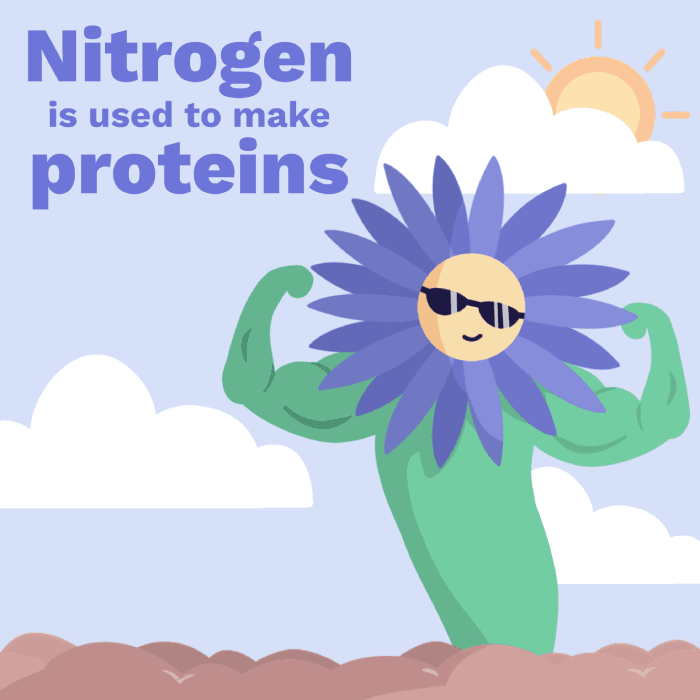
Nitrogen is used to make protein
While fertilisers are extremely useful, their production alone is responsible for 1.2% of global greenhouse gas emissions.
Not only that, most crops can only use around 50% of the fertiliser applied. Leftover fertilizer is often broken down by soil microbes into nitrous oxide (N₂O)
: a greenhouse gas with a warming effect 300 times stronger than CO₂
.
If fertiliser is swept into rivers and lakes, the nutrients inside it feed algae and plankton that reduce the amount of light and oxygen in the water. This suffocates fish and other aquatic species
.
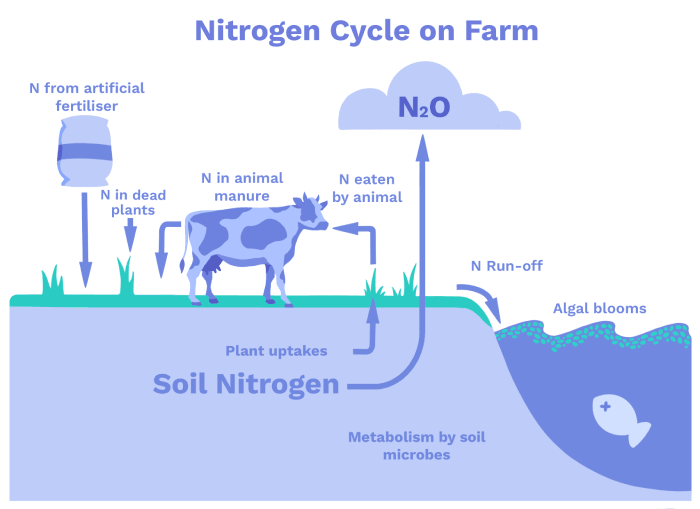
Nitrogen Cycle on the Farm
Pesticides are another chemical used by farmers. These protect crops from diseases, weeds, and plant-eating insects. Without crop protection strategies like pesticides, crop losses could be as high as 80%
!
However, like fertilisers, these chemicals require energy to produce. They are also toxic to many other forms of wildlife
, including pollinators that help crop plants reproduce
, and microbes that keep soils healthy and fertile
.
Non-CO₂ Emissions
Agriculture is the biggest emitter of the greenhouse gases nitrous oxide (N₂O) and methane (CH₄), accounting for 80% and 45% of the human-made emissions of these gases respectively.
We’ve already discussed how N₂O can be released from artificial fertilisers. But where else do non-CO₂ emissions come from? Let’s have a look in the graphic below:
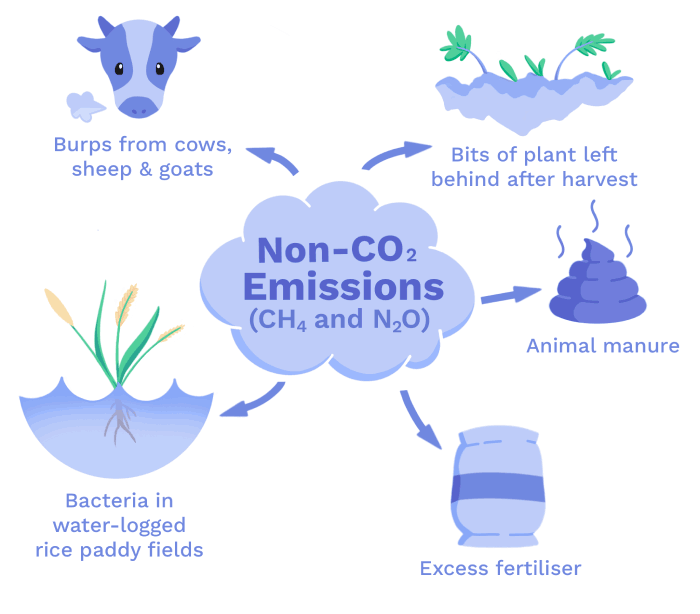
Non-CO₂ emissions in agriculture
Deforestation and Soil Degradation
Nearly a quarter of emissions from food production are released when land is cleared for agriculture.
Agriculture uses 50% of Earth’s habitable land and is responsible for 80% of global deforestation
.
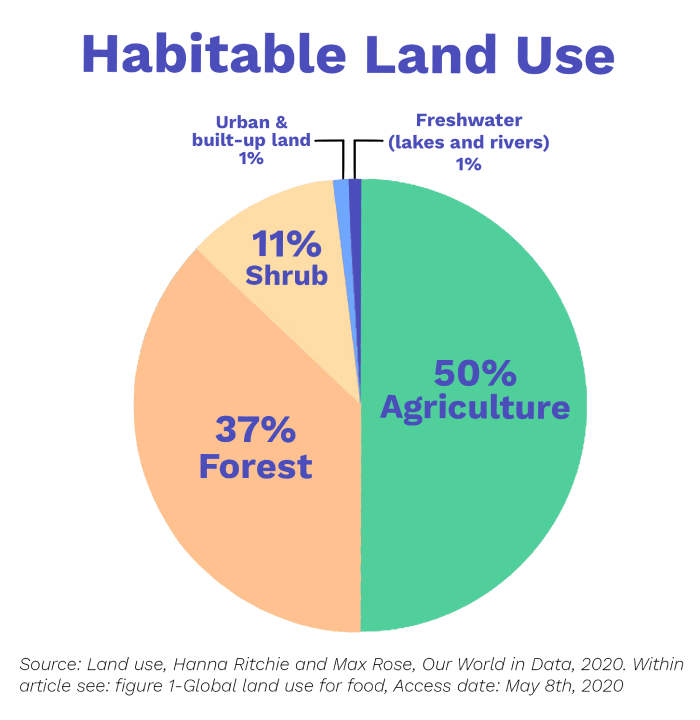
Habitable land use
The crops that replace trees store less carbon and are not as good at holding the soil together. This makes the soil unstable and results in its degradation, leading to landslides and dust storms
.
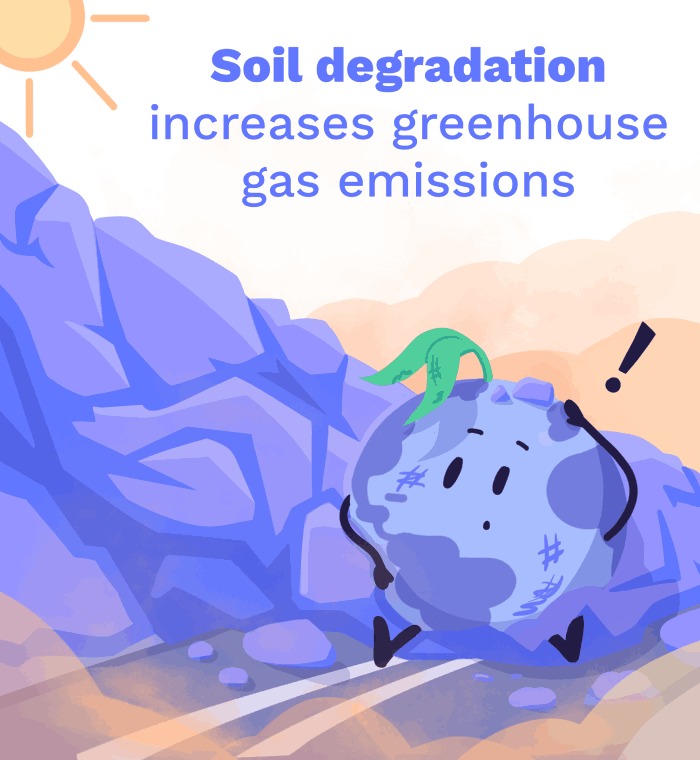
Soil degradation
Water use
While water makes up 71% of the Earth’s surface, only 3% of this is freshwater, the water we use to drink, wash, and water crops
. About two thirds of freshwater is locked away in ice, meaning only 1% of global water is accessible for direct use by humans
.
Agriculture uses more freshwater than any other industry, accounting for over 70% of global freshwater use.
Let’s look at this in more detail:
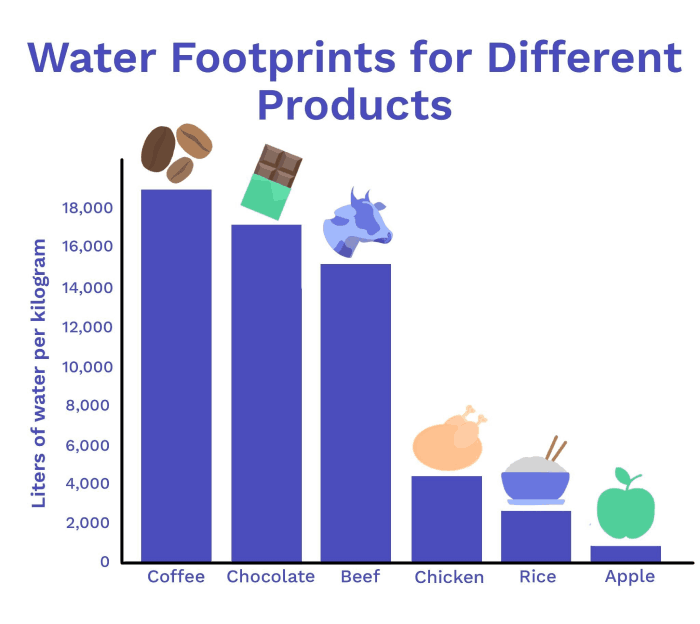
Water Footprints for Different Products
Climate change will only make these problems worse, and by 2025 up to two-thirds of the global population will experience water shortages
.
By 2050, the global population is set to reach 9.7 billion, and food production will have to increase by between 50 - 100% to feed our growing population
. But how can we achieve this when agriculture is already putting such a strain on our resources and our planet?
What is sustainable agriculture?
Let’s recap quickly. Today, agriculture:
- Releases around 21% of global greenhouse gas emissions (i.e. 82% of the emissions from our food supply)
- Uses lots of energy
- Damages surrounding ecosystems
- Takes up 50% of Earth’s habitable land
- Degrades soils, which releases CO₂ and makes it harder for plants to grow
- Accounts for 70% of global water use
If agriculture was made more sustainable, food could be produced on the same land indefinitely, without depleting resources. Sustainable farming is also less vulnerable to environmental change, which will be essential if we are to continue to feed ourselves in the face of climate change
.
In the next chapters, we will look at what farmers and consumers can do to make food production more sustainable.
Next Chapter
